Yuzo Sebata was in trouble. Miles of steep rock-face descents and rough mountain forest terrain separated him from the nearest road. On most days, this would be “business as usual” for Sebata-san – but today he had a serious problem. When you stand just a little over 5ft tall and are 52 years old, having a middleweight boxer of around 6ft tall lying at your feet with a broken leg is a pretty major issue. Especially given that this was in the days before any of them carried a cellphone…
Yagi-san, the boxer, was one of a party of three who had ventured into the mountains to fish pristine wilderness streams for native Japanese char (iwana). The third member of the group was Kikushi Minamiya, friend and intrepid cameraman.
What Sebata and Minamiya san did next just gives one more example of how the legendary status of Yuzo Sebata has grown over the decades in Japan.
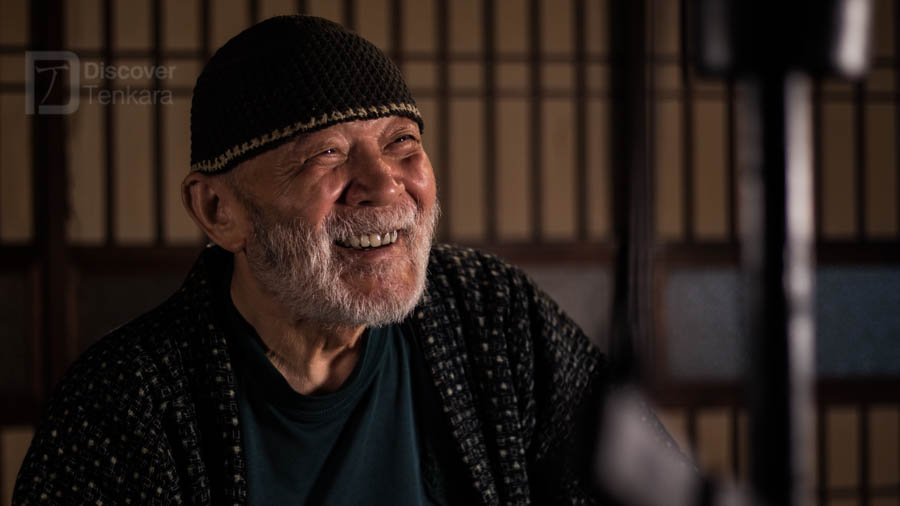
By cutting leg holes into his 90-L backpack, they were able to put Yagi-san into an improvised, giant “baby-carrier” on Sebata-san’s back – no mean feat given that the boxer must have outweighed him by at least 30lb. By tying his climbing rope to his harness – and with Minamiya-san taking some of the weight by controlling the other end of that rope – the pair set about hiking and climbing back to their car. A journey that included many steep rock-face descents and rough terrain.
In fact, the very first thing they needed to do was go UP…They needed to climb up to the top of the valley ridge before tackling an equally-steep and arduous descent into the adjacent valley before they could pick their way downstream towards safety…
As if clinging to the hand-holds and picking his way down each part of the descent was not already difficult enough, Yagi-san’s gruesomely-angled leg kept catching on rocks and plants – causing him to thrash in agony. Of course, this threatened to wrench Sebata-san from the mountainside – and risking more serious injury (possibly to both men).
When he told us this part of the story during our 2017 visit to meet him, Sebata-san laughed ruefully as he recalled trying to punch the boxer (over his shoulder) with his free hand in a desperate attempt to make him stop thrashing and screaming…The problem was that, as a trained boxer, Yagi-san was able to dodge those “over the shoulder” punches. “Don’t worry”, he told the man on his back “We’re getting you down”..punch-dodge-punch-scramble-thrash-scream-punch…
Eventually, after a marathon 11 or 12 hours of this incredible effort, the three men were able to reach their car at midnight (the accident happened around mid-day). Because they were able to drive to hospital, Yagi-san eventually made a full recovery thanks to that epic feat of endurance and improvisation.
What Goes Around Comes Around
Sebata-san, from initial solo expeditions into the Japanese mountain headwaters known as “genryu”, came to inspire a whole generation of outdoor enthusiasts in Japan (kick-starting the “sawanobori” or “waterfall-climbing” movement as well as developing his specific form of tenkara).
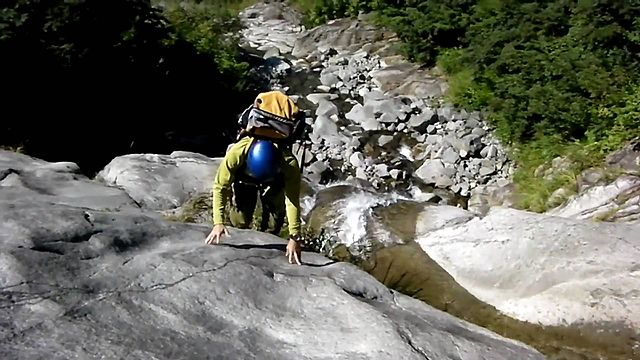
Inevitably, over time, the size of the group wanting to accompany him grew larger. So, his abilities and knowledge of the mountains, of climbing, swimming through gorges with heavy packs, foraging wild edibles, rough camping weren’t enough on their own. On top of all that, he needed to develop his skills of judging the abilities of new group members and mentoring them and always ensuring each part of an expedition was within everyone’s capabilities. That’s a big responsibility.
The efforts that he put into teaching and developing the confidence, knowledge and abilities of everyone in his group would, one day, be repaid…
Genryu areas are unbelievably beautiful – yet they are as dangerous as they are lovely. To underline this, when Sebata-san simply got his foot stuck between rocks – the sheer power of the water pushed him back with such force that he could not prevent his leg from being snapped.
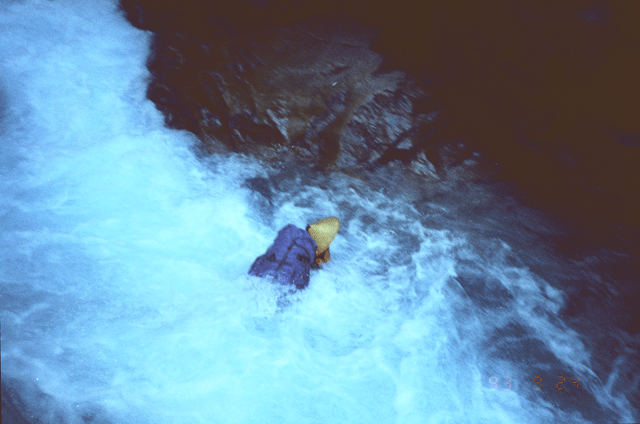
It was then that the mentorship and inspiration that he’d provided to his group enabled his group of around 20 people to successfully rescue their teacher. This was only achieved by supporting him in the water to prevent him from drowning, freeing his foot and getting him out of the raging flow, stabilising his leg before carrying him to safety.
But what is the backstory that led to his accidental leadership role?
Sebata san: Much More than a Cartoon Figure with a Bamboo Hat
The wonderful “Sebata-kun” drawing that you can see on the shirts of Sebata-san fans everywhere is a symbol of the genuine affection he has inspired. But, like the example stories above, it is the reasons behind this affection and respect that are most interesting. Even so, it is remarkable how he has already become one of the most recognisable figures in tenkara in the West – with his trademark “suge-gasa” bamboo hat and twinkling smile. Seeing him today, you might be surprised at the intimidating steel in his gaze when he was in his younger and middle-aged days!
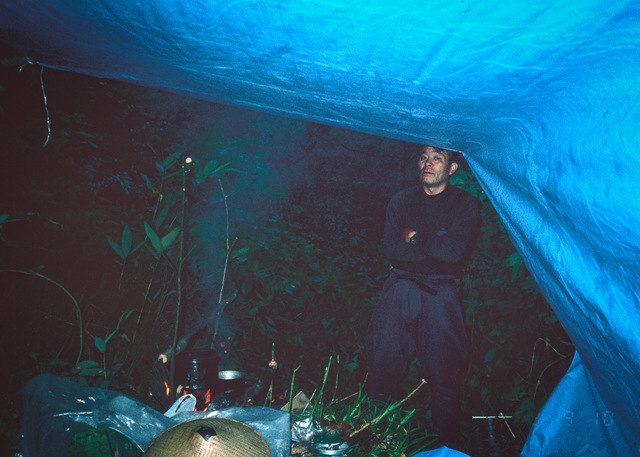
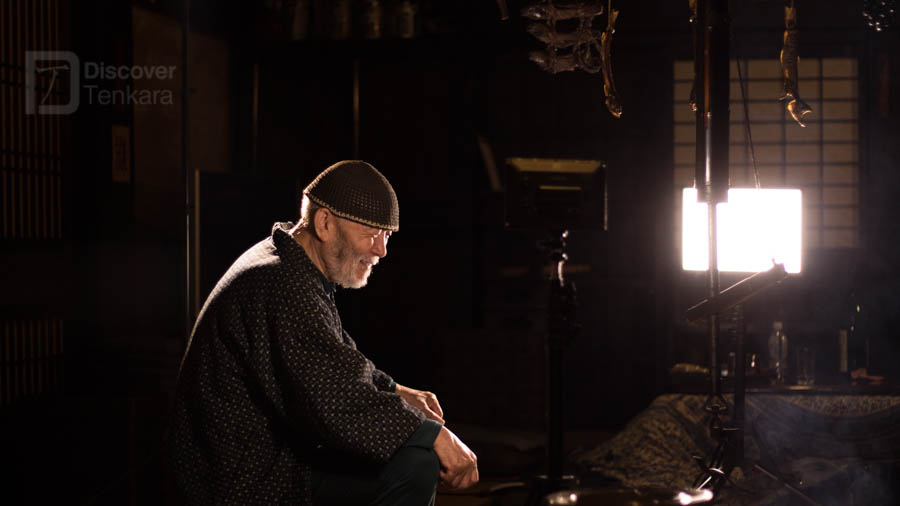
It was Daniel Galhardo’s featuring of Sebata-san in TUSA articles and videos that brought him to the attention of the Western tenkara audience, and I personally feel that he features in some of my favourite content from their site.
Yuzo is, of course, even more well-known in Japan – and with good reason. After all, he formalised the use of the very old word “Tenkara” for the traditional form of Japanese fly fishing. Up until the mid 1980’s (although there was plenty of published material that used the word “tenkara”), articles in magazines tended to mix and match freely between “kebari-tsuri” (literally “fly fishing”) and “tenkara” as a way to describe the techniques of tenkara.
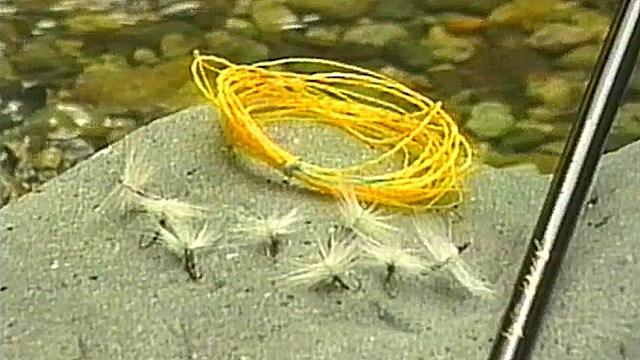
The editor of Tsuribito (Fisherman) magazine at the time called up Sebata-san to ask his advice on what term articles should settle on and stick with – so as to avoid confusion and mis-information (incredibly relevant to the debates that are taking place now in the West don’t you think?!). Tsuribito is an extremely prestigious publication. The fact that Sebata-san had earned a position of such high regard due to the articles he had published and the reputation he had developed is highly significant. They wouldn’t ask just anyone to rule on that editorial decision.
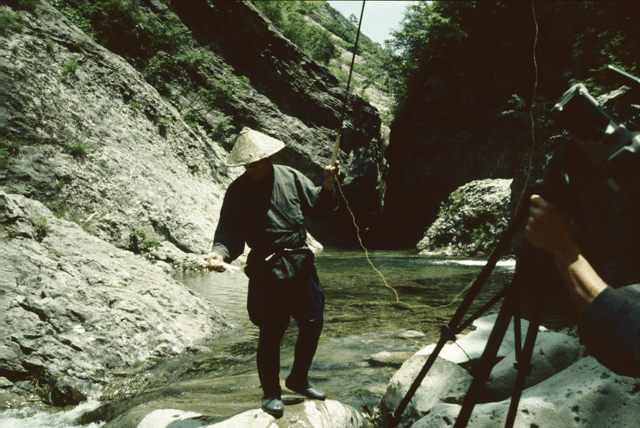
The journey of what has, now, become around 60 years working to develop and spread tenkara from the roots and values of the Matagi began with a 19-year old Yuzo heading up the Sode-sawa. This is a tributary of the Tadami river (which gives its name to his beloved Tadami Bansho). That, I understand, was his first solo genryu trip and – counting forward from his birth-date – must have been in the year 1960…Perhaps that was the trip when he reached the magic number of 5 yamame (Japanese trout) captures? I suspect, though, that he had already hit that “trigger-level” total…
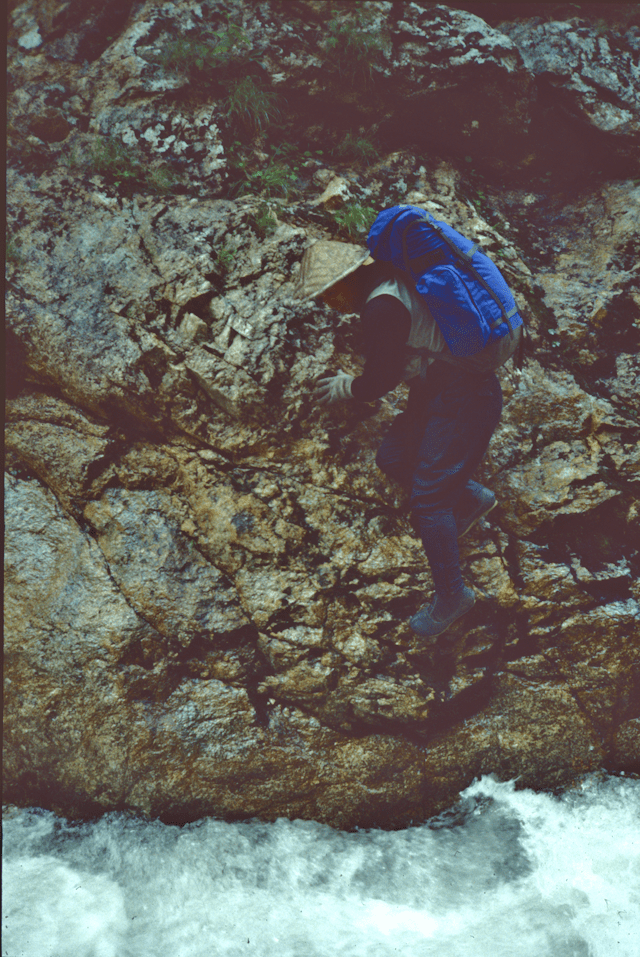
A small booklet that he produced in Japanese to explain his approach, main techniques and insights into fish behaviour (and how to use those insights to catch them!) contains the following story that I first read in English as part of his interview for Tenkara-fisher. It was suggested to Sebata-san by a more experienced angler that “Once you catch 5 fish on tenkara, you will be hooked on it for life”. That prediction certainly looks to have come true.
Sebata-san recalls “Then came the judgement day. For the better or for the worse, as advised, when I caught my first 5 Yamame (editor’s note: Yamame are Japanese trout), I entered a world which I never would leave. Looking back now, it all started with these 5 Yamame. It was those trout that led me into the “Great World of Tenkara”.
The booklet is a wonderfully condensed collection of wide-ranging thoughts – and it describes what Sebata-san labels his “Nikko Tenkara” style (for example, did you know that he uses a Rapala knot to attach his kebari on a loop at the end of his tippet for mobility?). It describes his preferred furled nylon fishing line casting lines (which he makes with the aid of an electric drill) as well as the importance of allowing some slack line when a fish grabs the fly – and how to use this, along with timing, to get a good hook set.
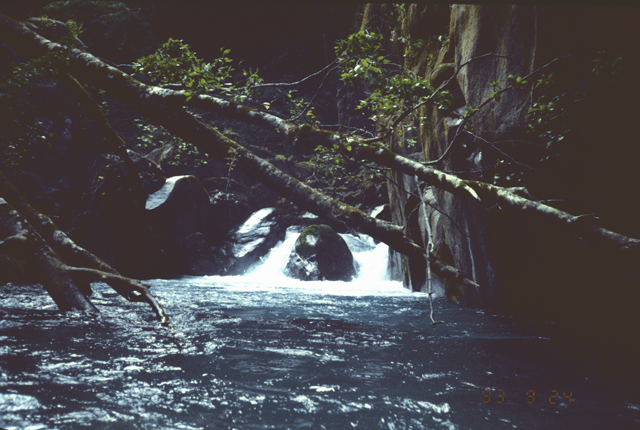
The name “Nikko Tenkara” seems to recognise the Matagi and Shokuryoshi roots and values that Nikko Tenkara promotes. The Nikko goddess is the mountain deity revered in the hunting ceremonies and life of the “Matagi” hunters. Through his articles, videos, booklet and continual practice of this style – the entire community of modern genryu anglers (which includes tenkara fishing, spin fishing and bait angling) owes their favourite pastime to Sebata-san’s creation and codification of exploring genryu to fish, camp and forage.
Nikko Tenkara and Genryu Fishing
The Nikko/Genryu approach embraces rock-climbing and rope-work skills, wild swimming, extensive knowledge of wild edibles, lightweight camping and following the routes and survival skills known to the Shokuryoshi (the original professional tenkara anglers) and Matagi hunters. The camping was often underneath the 1980’s innovation of the “Buru-shii-to” (“blue sheet” in “Japan-glish”!!) – a large blue plastic sheet that can be strung up as an open-sided shelter, allowing bedding and cooking areas to be set up underneath this temporary “roof”.
There are now lighter, more modern fabrics available for these shelters. Because the genryu fishing season is best in September (and Matagi hunting is restricted to the winter and early spring), Sebata-san also loves to find and use the permanent Matagi shelters deep in the mountains. At the time when fishing is best, you will not be in conflict with the Matagi and they probably appreciate any repairs and maintenance done to those structures if they are still in use.
Above all, genryu fishing is about remoteness and using the rivers as the easiest pathway into the mountain wilderness. Contrary to popular belief, it is not really about the size of the watercourse. Some of the mountain headwaters are quite wide and most are very steep and powerful with deep, fast water. Instead, it is more about the distance from the nearest transport access point and the effort required to reach these areas that qualify something as a “genryu” trip. One of the well-known modern practitioners who loves genryu exploration and the culture inspired by Sebata-san is Keiichi Okushi (whose multi-part guide to genryu series you can read here).
Playing on the idea of the Uodome-no-taki (fish-stopping waterfall, or Uodome for short), in genryu exploration the “Kuruma-dome” is the point where your car can go no further – and you must get out and start hiking, swimming and climbing.
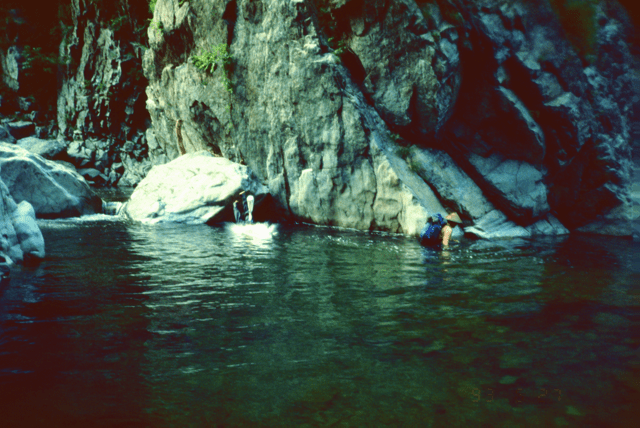
Most “serious” genryu enthusiasts only count rivers that are at least a day’s hike from the nearest road as true genryu waters. On the other hand, anything that requires an uncommon amount of effort (at least several hours hike), includes rock-climbing and rope-work to access would probably be accepted in a more relaxed definition. Camping for several days is also a strong defining factor – and Sebata-san would commonly disappear into the wilderness for two or three weeks at a time in his prime.
The definition of genryu fishing is found in the adventure of getting there – NOT just in the fishing itself. In fact, the fishing necessarily only takes up a minority of the time on a genryu trip. The rest of the time you are climbing or surviving!
If you need yet another example of that, here’s a wonderful cartoon by Sebata-san’s partner in crime Kikushi Minamiya. It documents just one of the times when their party was caught by rising floodwaters. The river had already occupied all of the level ground in the valley – so the group was forced to lash themselves to a steep shelf higher up above the valley floor. Even so, that precarious sleeping spot was only just above the floodwater at its peak! Minamiya-san had taken the time to create a slightly more substantial shelter by lashing branches together as well as securing himself to the mountainside. Just another notch on the belts of the career genryu addicts…
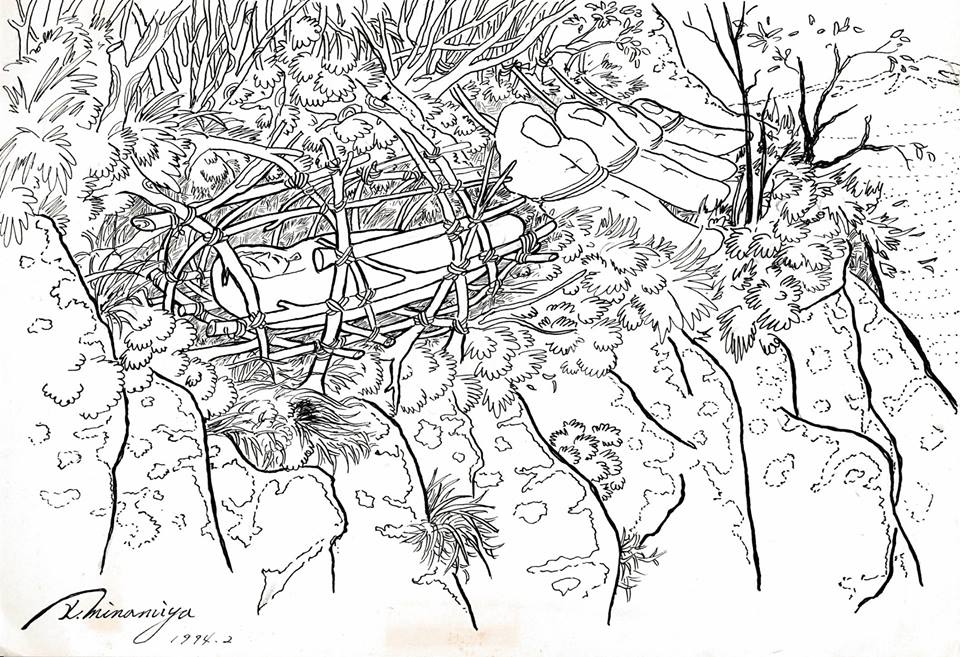
The goal of Sebata-san genryu fishing is to find the Uodome-no-taki – the “fish-stopping waterfall”. Because iwana (white-spotted char) have this incredible drive to keep forging upstream, deeper and deeper into the headwater wilderness areas – they are found far above the populations of yamame and amago (Japanese trout strains).
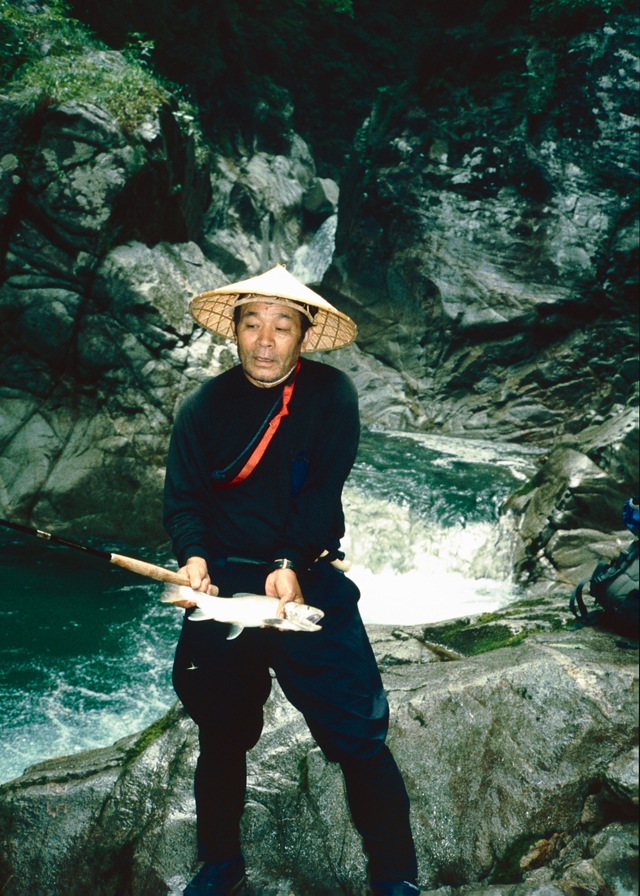
They also live far longer than yamame and amago. That means, when an iwana can establish itself in a plunge pool away from the attentions of anglers, it can grow very large for its species. Even in a relatively small stream, if the plunge pool is deep enough to hide in and there’s a reliable food supply (which the limestone mountain streams have in abundance by the way) an iwana surviving for many years can become a giant in such a small pool.
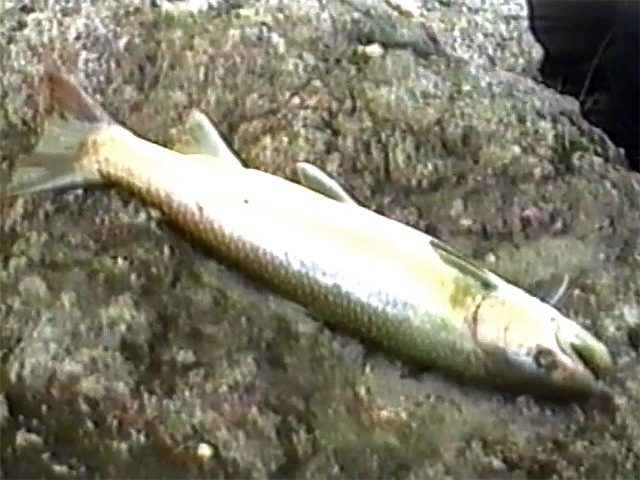
Some people have compared Sebata-san to the iwana. They both have an unstoppable drive to keep heading upstream to explore. It is very fitting, then, that he has such affection for these fish – particularly the ones far from human pressures and habitation.
While these descriptions fill out a little of the culture, philosophies and activities that Sebata-san has spent his life developing and promoting, it would be silly to miss out some of the simple details of Who Yuzo Sebata is…
Yuzo Sebata san Bio
Born: October 1940
Birthplace: Ibaraki Prefecture, Chikusei city (Shimodate city)
Adult Life: Lived over 30 years in Komagome area of Toshima ward, Tokyo
Profession: Restaurant owner in Tokyo (“Mukago”; late 1980s – 2010)
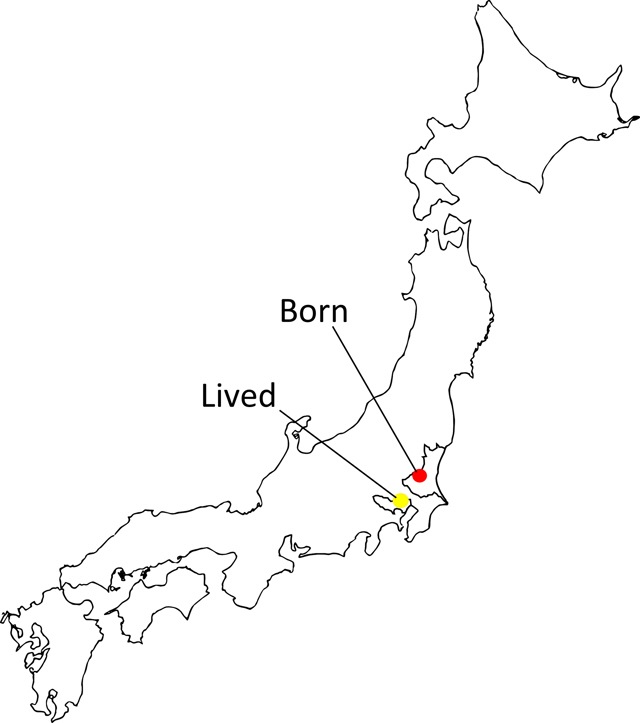
When we met Sebata san for the first time in 2017 and found out that he was a chef and restaurant owner, I asked him what came first – his love of food and ingredients or his interest in wild edibles. He said that it was his exploration of wild foods that gave him his interest in foods and ingredients. So, in that way, his profession as a chef grew out of his love for wilderness exploration and genryu.
His restaurant was opened in the late 1980’s and he ran it right up until its closure in 2010 – with a huge amount of support and from his partner in the business (which allowed him to disappear into the mountains for two or three weeks at a time). The restaurant itself was called “Mukago” which is the Japanese baby yam.
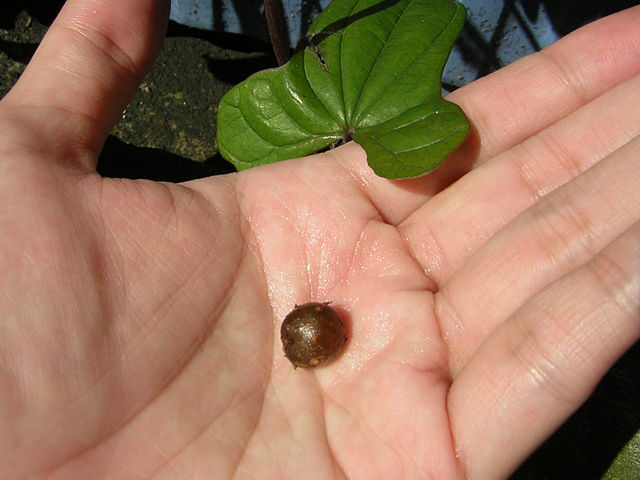
Over the last twenty years or so (at the time of writing) Yuzo has been regularly visiting and staying at the historic Tadami Bansho (where we filmed Go Ishii’s interview for Tenkara in Focus). It is a great base for exploring fishing areas and also an incredibly beautiful 250-year old thatched-roof building. You might remember that the 19-year old Yuzo’s first solo trip was on a tributary of the Tadami river, so there seems to be a strong attachment on many levels.
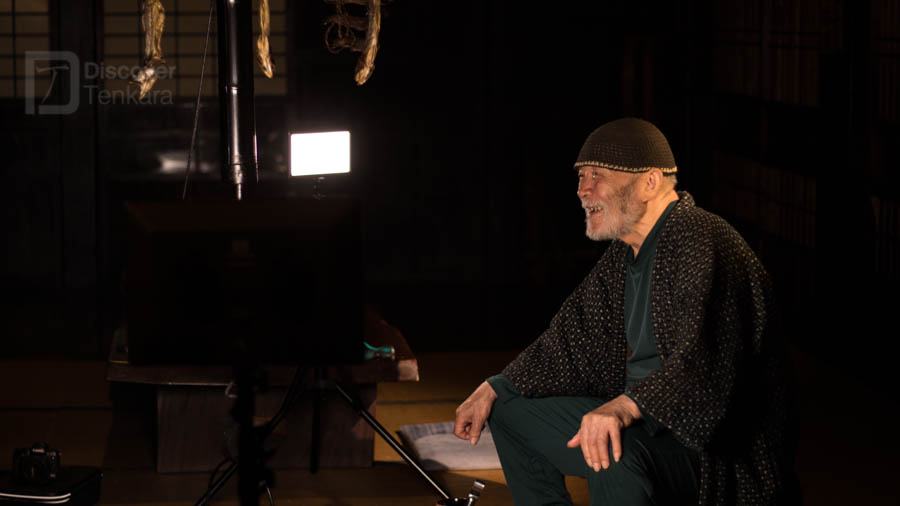
Yuzo Sebata’s Favourite Mountain Wilderness Settings
When pressed, his favourite genryu areas are:
- Kurobe River System (Kurobe Mountain Range) Toyama Prefecture
- Miomote-River System (Asahi Mountain Range) Niigata & Yamagata Prefecture
- Haide River (Agano River System) (Kawauchi Mountain Range) Niigata Prefecture
Images of both Haida-gawa and the Kurobe system feature in this article.
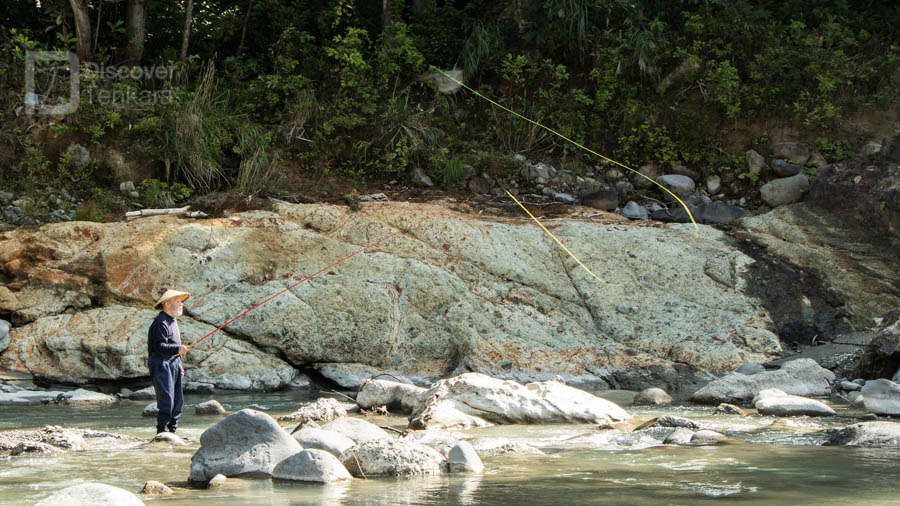
Gregarious and charming, Sebata-san is a really charismatic figure (and he certainly does enjoy the attention of the women he meets!). It is easy to see how he has so naturally drawn people together, inspired them and acted as such a wonderful connector between people.
His reverence for the wilderness areas is also inspiring. For example, because he accepts he is entering into the ecosystem of those regions – he does not begrudge the leeches or other blood-sucking creatures their meal from him! Instead he allows them to feed and seems to see this as a way of paying back the complicated food-webs of the mountains for the enrichment he gains from spending time there. It is the complete immersion and participation in nature which is important to him I suspect.
Of course, providing food in other, more familiar ways, is also important to Yuzo. As is so often the case with the best friendships around the world, by being a wonderful chef, Sebata san embraces the communal sharing of food as an important social “glue”. That combination of wonderful cooking and attractive personality is a powerful mix in an accidental leader of a group.
Passing on Skills and Knowledge
Perhaps one of the simplest, and best, illustrations of the depth and refinement of his knowledge is in that crucial foundation of rough camping and communal eating: making the camp fire.
Knowing that the wind is funnelled along the valley, Sebata-san will line up the logs and twig bundles in a particular way to take advantage of this. His highly unusual method is one that he developed using his own trial and error over the years. His main aim is to avoid any one section of the fire burning more rapidly than the rest. He also does NOT want to “tend” to the fire during the starting process (as this interferes with his other tasks that he needs to complete in order to set up camp).
This means that he will place the bigger logs on the outside/windward edges of the fire (to prevent the kindling-sized twigs from burning too rapidly). He also bundles his kindling twigs together tightly with twine – REDUCING a lot of the air-gaps which most people try to include in their fires.
His method, he says, also works well with even slightly damp wood and his overall aim is to light the fine tinder in the midst of the tightly-bundled kindling and carefully-arranged logs. As long as there is white smoke coming from the tinder and the centre of the fire, it will eventually get hot enough and suddenly burst into flames.
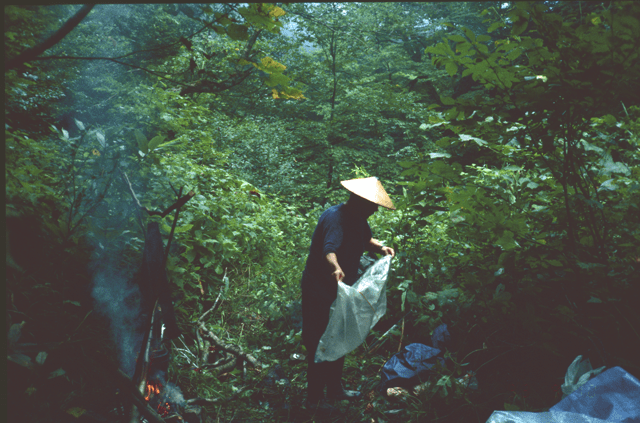
This is the key – the long, slow, build-up of heat while it is left all alone and then suddenly catching light into a perfectly even fire. This is what lets him get on with the essential tasks while the vital fire is basically “looking after itself”. By the time those tasks are done, the fire is at the perfect stage to begin cooking.
Recent Ill-health and the Future: The Sebata san Projects
Looking at the short, powerful build of a 50-year old Yuzo Sebata, perfectly at home in the mountains (and usually far out-pacing his much younger comrades when hiking or wading), it is quite a contrast to see him in his late 70s.
In fact, between 2016 and 2017, Sebata-san has suffered some serious bouts of ill-health (which, reading between the lines, probably included a heart attack and one or more aneurisms). He was even found unconscious in a hot bath, but was miraculously rescued before he drowned. At the time of writing in 2018, his health is gradually improving and, towards the end of 2017 he was able to walk a little way to the river’s edge and to fish again.
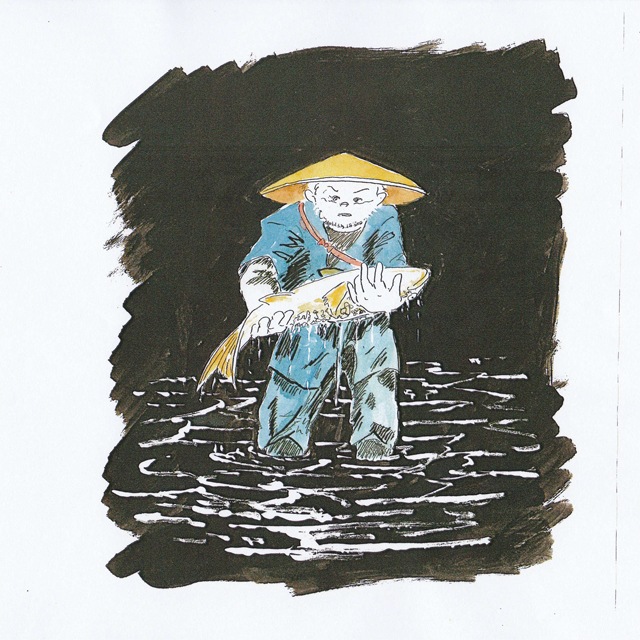
Paul
